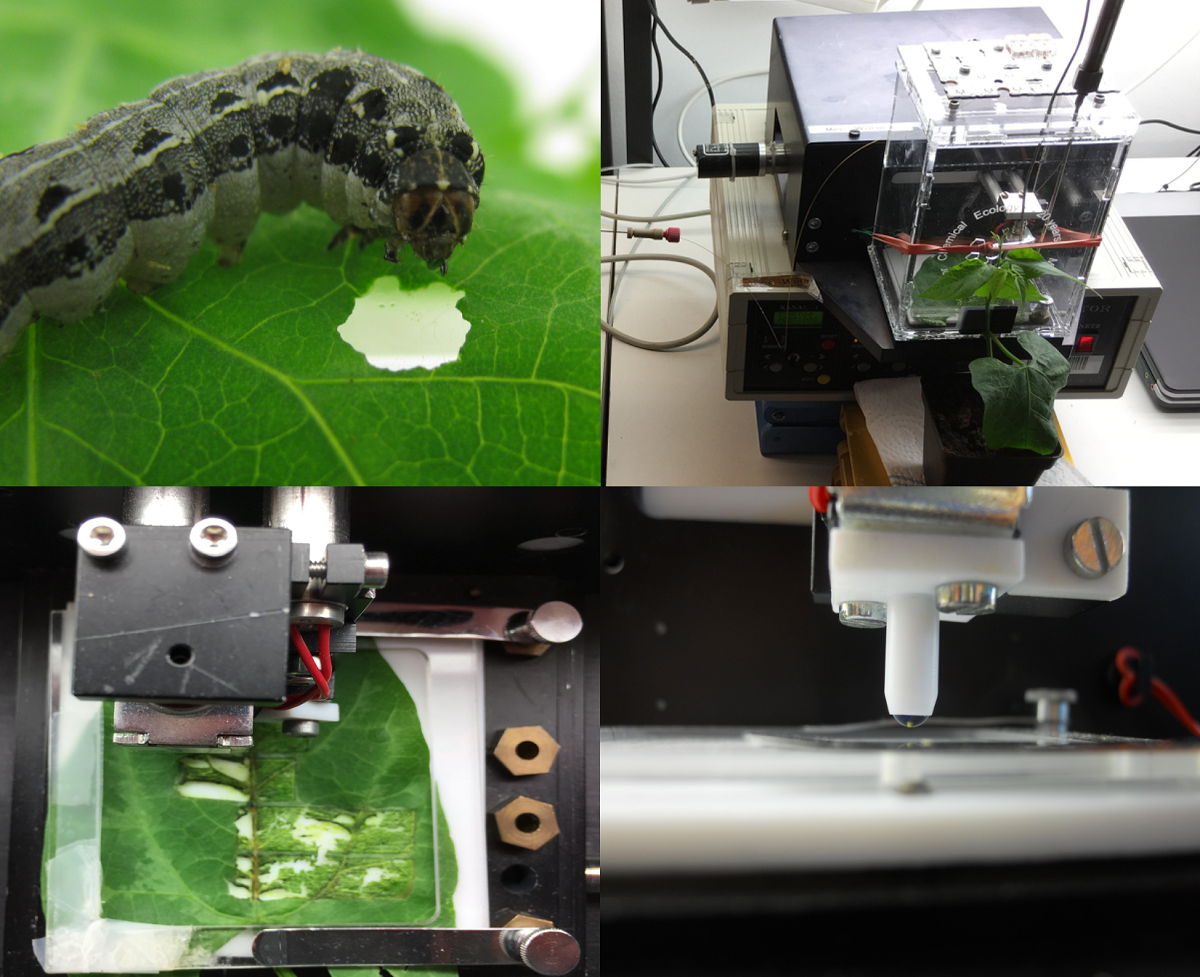Induction of jasmonate-mediated plant defense against insect herbivory is initiated by a combination of both, mechanical wounding and chemical factors. In order to study both effects independently on plant defense induction, SpitWorm, a computer-controlled device which mimics the damage pattern of feeding insect larvae on leaves and, in addition, can apply oral secretions (OS) or other solutions to the ‘biting site’ during ‘feeding’, was developed and evaluated. The amount of OS left by a Spodoptera littoralis larva during feeding on Phaseolus lunatus (lima bean) leaves was estimated by combining larval foregut volume, biting rate, and quantification of a fluorescent dye injected into the larvae’s foregut prior to feeding. For providing OS amounts by SpitWorm equivalent to larval feeding, dilution and delivery rate were optimized. The effectiveness of SpitWorm was tested by comparing volatile organic compounds (VOC) emissions of P. lunatus leaves treated with either SpitWorm, MecWorm or S. littoralis larvae. Identification and quantification of emitted VOCs revealed that SpitWorm induced a volatile bouquet that is qualitatively and quantitatively similar to herbivory. Additionally, RT-qPCR of four jasmonic acid responsive genes showed that SpitWorm, in contrast to MecWorm, induces the same regulation pattern as insect feeding. Thus, SpitWorm mimics insect herbivory almost identical to real larvae feeding.

